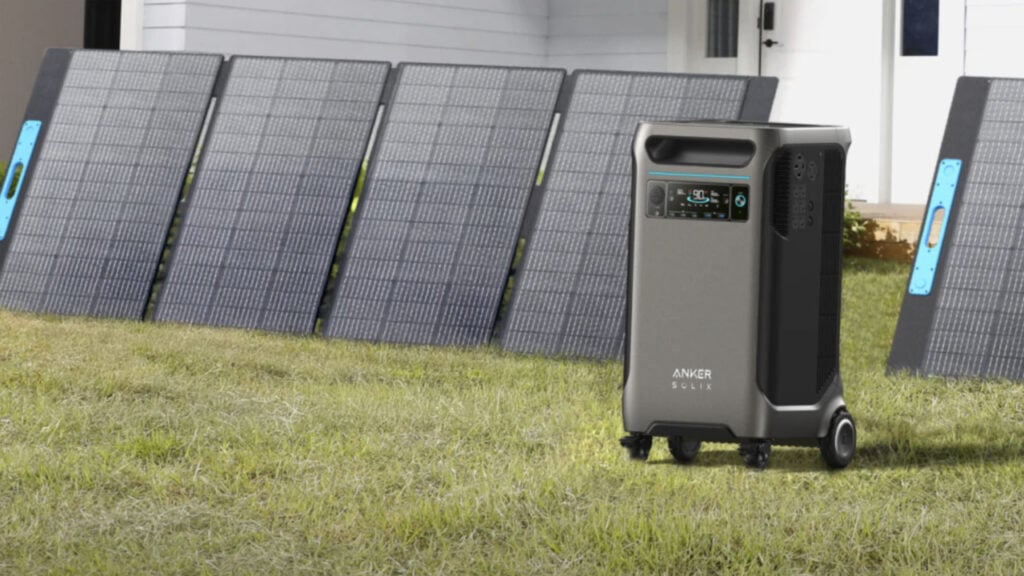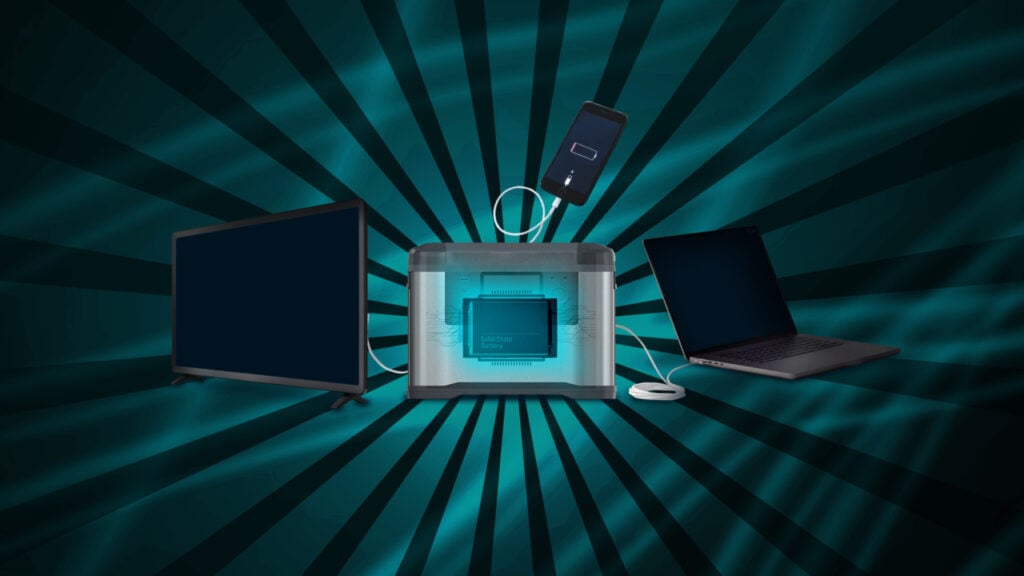If you have shopped for portable devices and other handy gadgets online, chances are you would usually come across portable power stations. It seems that they have abruptly transitioned from niche gadgets to heavily marketed devices within the modern tech industry.
In fact, the global market for these items surged from $330 million in 2018 to $474 million in 2022, with projections soaring past $700 million by 2029. It may look like an expected gradual trend, but it is really a sudden explosion of adoption that took over the market.
But what’s behind this abrupt rise in popularity? Why, technological leaps, of course, along with a few rather unexpected turn of events for the last five years.

Convergence of Catalysts
There were several key elements that contributed to this portable power station boom:
Location Restriction Lifestyle Changes
Let’s face it. People were just too eager to go outside after being quarantined by the COVID-19 pandemic for so long. Lockdowns sparked a renewed interest in outdoor activities as people sought ways to cope with their previous long-term confinement. It wasn’t exactly a surge, but it was significant. According to a 2021 report by the Outdoor Industry Association, 7.1 million more Americans participated in outdoor activities in 2020 compared to 2019. These are not your dedicated off-the-grid participants, and thus the influx of demand for portable power to keep their lifestyles on the road needed to be met.
Simultaneously, the rise of modern deskwork in remote locations made portable power more crucial than ever. As people set up offices in parks, remote cabins, and even rural farms, being able to keep using digital productivity devices became crucial. These low-power setups do not typically require extended connections to grid power, and can generally be sustained by a modest combo setup of a foldable solar panel and trusty portable power station. If Starlink can do it anywhere, why not any other modern computing device?
Different setups and scenarios have been a discussion point on message boards, and with capacity going up, the craziness is going to amp up. Almost 10 years ago, Linus from LinusTechTips probably topped that off already by holding a HighLANer LAN party event on the top of the 14.000-foot mountain, and something like a portable power station would definitely be of use back then. Granted, they didn’t play the type of web browser-based games like the ones that just became the newest addition to the FatFruit.com casino, as the slots and table games are not even close to being as power-hungry as triple-AAA titles, but it would definitely help them out on stay out longer, although it’s a question if that’s something you want to do on a freezing mountain summit.
Emergency Preparedness and Grid Instability
More alarmingly, the increasing frequency and severity of extreme weather events have highlighted the vulnerability of ultra-modern digital setups connected to traditional power grids. From hurricanes to wildfires, power outages are becoming more common and prolonged. A report from Climate Central showcases this grim reality, with major power outages (affecting 50,000+ customers) having increased by a whopping 67% since 2000, despite core improvements in power infrastructure technologies.
This growing unreliability of the grid has dramatically increased consumer interest in backup power solutions. And what do you know, portable power stations are not only more versatile, they are also very easy to set up and intuitive to use. It also helps that digital devices today are more efficient and are easier to keep power for longer periods. Plus they are quieter, can operate very safely indoors, and do not require additional space for storing fuel. Also, as mentioned, it is always just an easy plug away from any standard foldable solar panel of 45W to 200W.
Technological Leaps
Battery technology has also just simply become better. At the higher end of the improvements are perks dedicated to more renewable energy systems for homes, then it trickles down to portable power stations. Energy density, cycle life, and safety have all improved across the board, while costs have dropped. Lithium-ion batteries have steadily become cheaper, and are, in fact, 97% lower in cost compared to three decades ago.
As a result, portable power stations can store more energy in smaller, lighter packages, leaving other traditional emergency energy sources even further behind. So conceptually, at least, portable power stations can still run the largest of everyday appliances at a handy form factor (please don’t do it, though).
Of course, along with the battery itself, advancements in battery management systems (BMS) have also played a crucial role. Think about how advanced your smartphone is in managing battery output and temperature across different applications. Now do the same thing on portable power stations. It is the modern-day “essence” that keeps all of our mobile devices running efficiently, and this includes portable power stations.
The Power of the Internet
Not exactly a direct factor, but the rise of direct-to-consumer sales and savvy social media marketing makes it far easier to achieve brand awareness without spending a ton on advertising. YouTube and Instagram have become very accessible platforms to showcase products in real-world scenarios, either by official channels or by third-party reviewers.
And speaking of reviewers, the impact of influencers on this side of improvement has been particularly notable. Outdoor enthusiasts, van life advocates, and tech reviewers with large social media followings have played a significant role to popularize and normalize portable power stations for the connected masses. There could be a few controversies here and there, and some clashing opinions, but these presences still generated media buzz nonetheless.
Oh and, you can buy most of your stuff online as well. The ability to easily compare features, read reviews, and make purchases through e-commerce platforms has dramatically expanded the market reach of these products.
Top Dogs of the Game
And yes, the key players themselves have built upon the foundations of this industry as well:
Jackery – One of the OG pioneers in the portable power station space, Jackery has built a strong brand around outdoor and off-grid solutions. Their Explorer series, for instance, ranges from compact 240Wh units to robust 2000Wh models. Jackery’s emphasis on solar compatibility has made them popular among campers and RV enthusiasts.
EcoFlow – Leaning more on reliability perks and stacking on features, EcoFlow immediately rose the ranks as a notable brand. The Delta series generally offers versatile charging options, while the River line competes evenly in the compact solutions category. For this particular brand, more features, more power!
Goal Zero – Somewhat more focused on humanitarian energy solutions (at least in the beginning), Goal Zero boasts its outdoor adventure market right next to its emergency and auxiliary applications. To reflect this, the Yeti line spans from small handier units to straight-up home backup systems, with a mixed focus on durability and integration.
Bluetti – A relative newcomer, but generating online buzz regardless, Bluetti has gained traction with modular designs. General weight issues aside, their AC200 series offers expandable capacities of up to 8kWh, pushing the boundaries of what’s possible in a “portable” power station.

The Solid-State Promise and the Yoshino Controversy
Solid-state battery technology looms as a tantalizing next step within this industry, providing significant improvements across the board. More energy, faster charging, longer service life, everything. Think of the jump from CRT to LCD, but with tighter improvement gap schedules. Unsurprisingly, this created additional buzz around portable power stations. Since, unlike other mobile gadgets, these devices focus specifically on the source of the energy itself.
As its name implies, these batteries replace the liquid or gel electrolytes found in conventional batteries with solid materials. Aside from the aforementioned improvements, it also promises improved safety due to its inherent design as a solid product. This prevents a hypothetical, but very real, scenario where your portable energy system causes a local disaster.
This is why Yoshino generated a lot of hype and skepticism throughout the entire enthusiast spectrum, sometime at the start of 2023. The company marketed its B330 and larger models as using true solid-state battery technology, claiming superior performance over conventional lithium-ion batteries.
Sadly, though, the skeptics were proven right. Teardowns and analysis by tech experts and YouTubers revealed that the Yoshino batteries contained significant amounts of liquid electrolytes. A more unique combination for sure (Li-NCM, as opposed to the more common LiFePO4 and Li-ion), but definitely not groundbreaking. This discovery sparked debate on platforms like Reddit, with users questioning the company’s claims and the readiness of solid-state technology for consumer products.
At the very least, the hype surrounding the controversy proves that there is indeed intense consumer interest in next-generation battery technology. There is an impetus for competition through innovation, using whatever marketing gimmick is necessary it seems.
So, while the Yoshino case may have disappointed some consumers, it hasn’t dampened overall enthusiasm for portable power stations. If anything, the increased awareness of the next technological jump continues to fuel anticipation for genuine advancements.

Other Contributing Factors
Of course, many other trends contributed to the surge in popularity of portable power stations today:
Price Accessibility – Manufacturing improvements and competition have driven prices down for the average consumer. High-capacity units significantly under $1000 has opened up the market significantly, and the selections are quite diverse. Reliable power stations under $200 are even available! You just have to temper your capacity expectations as you go down the product tiers.
Product Diversity – Following price accessibility, the market now offers a wide range of options, from small units for camping to large systems capable of powering entire homes, suddenly making portable power relevant to a much broader audience. This diversity allows consumers to find a product that precisely matches their needs, increasing overall market penetration.
Consumer Education – It’s not just about trendy marketing. The raised awareness of these products also teaches the capabilities of these products, suddenly making them a “must-have” for a good number of entertainment and productive niches. The proliferation of online reviews, comparison videos, and real-world demonstrations has educated consumers about the benefits of these devices, as well as their drawbacks.
Very Inuitive to Use – Modern portable power stations are significantly easier to use than their predecessors or alternative power sources like gas generators. Features like clear LCD displays, multiple output options, and companion smartphone apps have suddenly made these devices accessible to non-technical users. Oh yes, and maintenance “almost” non-existent!
Environmental Consciousness – As climate change concerns grow, a nice portion of consumers are increasingly looking for clean, quiet alternatives to gas generators. Maybe not as important as others due to the limited demographic of users that actually care. But it counts.
Doubts, Worries, and Hopes
So, will we see larger companies snapping up successful startups, or can we expect the market to maintain its diversity of brands? Because the portable power station trend isn’t just about the consumer. We like that other players such as Yoobao and Anker are dipping their toes in the industry. However, there is still a nagging feeling that brand power might overcome price competitiveness.
Then there’s the technological frontier. Yoshino was indeed disappointing. But, solid-state batteries still hold up their promises and are now closer to reality than ever before. If companies like QuantumScape and Toyota can overcome the production challenges and high costs, it is easy to see yet another OLED revolution situation here. Then again, like LED screens, incremental improvements in traditional lithium-ion technology will keep pushing the market forward regardless.
A topic that doesn’t often get enough attention is how portable power stations might integrate with the grid. Could they eventually play a role in home energy management? There’s potential for these devices to go beyond just backup power; they could become part of a smart grid ecosystem. Perhaps infused with the same intuitive applications as its simpler, handier counterparts.
Of course, as these devices become more common, the regulatory landscape will undoubtedly shift. Tighter rules around battery safety and transportation are likely on the horizon. This could slow down some innovations or make the proposed advanced versions of these devices more expensive to produce and transport.
Another pressing issue is sustainability. While portable power stations can be recharged solely by renewable sources, the manufacturing processes themselves for the products are still subject to environmental safety concerns. Will the industry pivot toward more sustainable manufacturing and recycling processes?
Finally, the question of new use cases for portable power stations is probably the most exciting yet. True solid-state versions could unlock entirely new ways of living and working, from fully powering mobile businesses to almost negating power issues during severe weather.
Just Keep an Eye for Store Discounts, For Now
At the moment, at least, lithium-ion batteries will continue to be the norm. But on the horizon, solid-state batteries carry the immediate promise of a significant leap forward. The future of portable power stations is being shaped by technological advancements, market forces, regulatory shifts, and sustainability concerns, all of which will define what’s possible in the years to come.
Who knows, maybe something better than solid-state batteries will be discovered within that time frame.
Caroline is doing her graduation in IT from the University of South California but keens to work as a freelance blogger. She loves to write on the latest information about IoT, technology, and business. She has innovative ideas and shares her experience with her readers.






